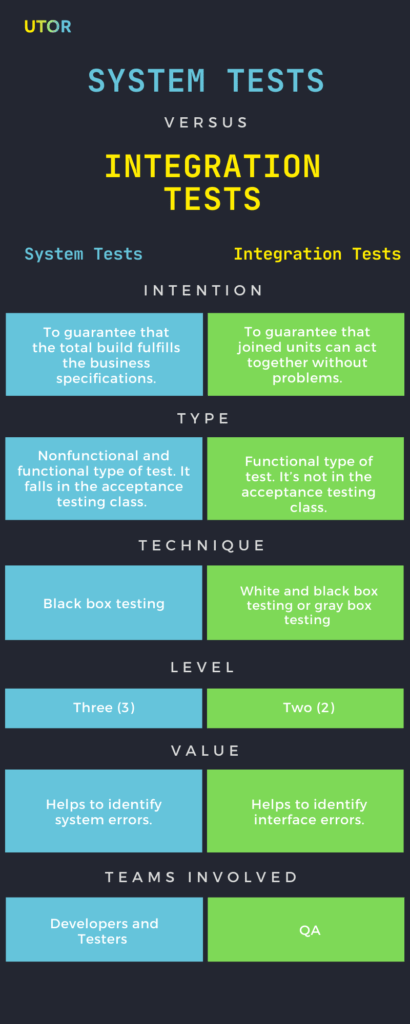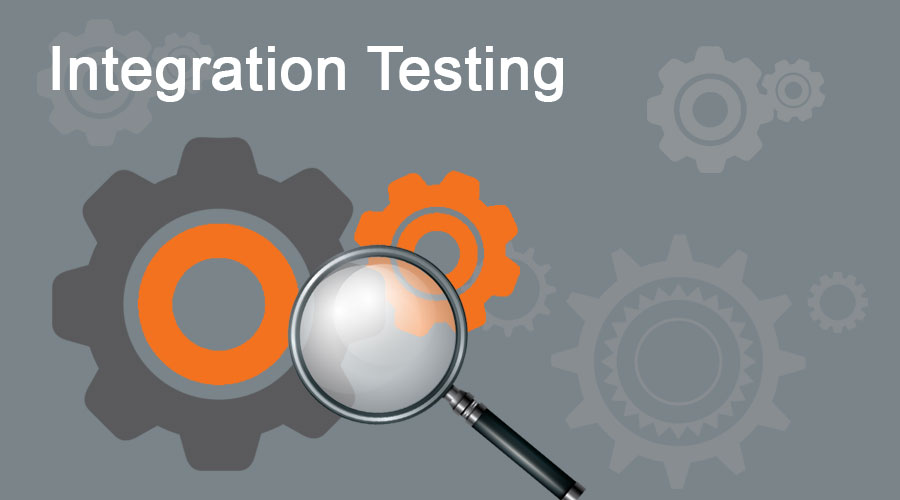When you begin implementing a software testing strategy for your application, one of the first questions you’ll ask yourself is this one: system testing vs. integration testing system —which should I go for?
The main differences between these testing stages are in when and why they are performed. Both offer considerable opportunities to improve the quality and performance of the software.
System testing is a testing level in which tests are performed to know if a complete build aligns with functional and nonfunctional requirements made for it. In contrast, Integration testing is a testing stage where two or more software units are joined and tested simultaneously.
The real challenge is understanding the full range of conditions used to define system testing or integration testing. In response to this, we will look at these test types’ concepts and clarify their differences. This article will help you decide the right course for your test execution during the SDLC.
What are the Differences between Integration Testing and System Testing?
| System Tests | Integration Tests | |
|---|---|---|
| Intention | To guarantee that the total build fulfills the business specifications. | To guarantee that joined units can act together without problems. |
| Type | Nonfunctional and functional type of test. It falls in the acceptance testing class. | Functional type of test. It’s not in the acceptance testing class. |
| Technique | Black box testing | White and black box testing or gray box testing |
| Level | Three (3) | Two (2) |
| Value | Helps to identify system errors. | Helps to identify interface errors. |
| Teams involved | Developers and Testers | QA |

What are the Similarities between Integration and System Tests
- Methodology: Both tests leverage Agile. Agile is a methodology where testing tests are split into several release cycles. Testing responsibilities are shared among different teams with the active involvement of the stakeholders. Agile ensures that iterations keep happening after the software’s final release. Effective communication is maintained across the development and QA teams, and the customer’s opinions are valuable.
- QA participation: Both tests involve the participation of Quality Assurance testers.
- Test Environment: System and integration test environments are proximate to the product’s operations’ real conditions.
- Tests: Functional testing is standard in both system and integration testing.
- Technique: Black box tests are carried out in both.
- Test level: They are both stages of testing in the SDLC.
What is System Testing?
A system test inspects every software unit to secure their proficiency as a whole or assembled build. In software engineering, a system test takes place after unit and integration testing.
The QA team tests critical checkpoints in the overall process to determine whether business objectives are being met. Therefore, the complete system gains disapproval or approval for the final evaluation in acceptance testing before going into widespread use by users.
Developers report all system errors and decide the type and amount of errors that can be permitted.
When is System Testing Done?
The primary purpose of system testing is to examine the build’s functionality. As a result, quality assurance teams perform it:
- During the development of each software version.
- During the application launch, through alpha and beta testing.
- When unit and integration testing are complete.
- When the desired requirements are complete.
- When specified testing conditions are designed.
This test level also checks the software’s conformity to user demands, functional performance, and design.
What Tests are Carried out in System Testing?
Here are some of the nonfunctional and functional tests used for executing a system evaluation.
- Functional testing, including unit, integration, and acceptance tests
- Nonfunctional testing, including security, usability, load, compliance, stress, and performance tests.
What are the Approaches for System Testing?
The approaches could be:
- Requirements-based: if test cases are prepared based on sole specifications
- Use case-based: if use cases are prepared or test cases are used to verify scripts to determine the different ways the system is usable.
How is System Testing Done?
System testing is carried out as follows:
- Test plan: Create a test plan, including test cases and use cases.
- Test data: Create test data and perform an automated test, followed by a manual test.
- Test results: Review the test result and write a report based on it. Log the errors and carry our regression testing after reporting the errors.
- Debug: Fix the errors found in the system.
- Recycle: Repeat the cycle and stop when all errors have been removed.
What is Integration Testing?
The term “integration” means a process of combining into an integral whole. Similarly, integration testing of a build indicates separate testing units of a system as one.
The purpose is to find out if these combined units interact without issues. By doing an integration test, testers can recognize errors between joined units.
Testers can also determine the reliability of the individual units. It tells if they perform expected functions. This test proceeds the unit test; as such, it is introduced on completion of unit testing. The advantage of the test hierarchy is that integration testing can reveal anomalies missed during unit testing.
When is Integration Testing Done?
The appropriate timing and conditions are when:
- To check the performance or engagement of several integrated units
- To check if the interactable interface between such units contains some errors
In the latter instance, errors may present in the interface due to the following reasons:
- External systems developed by different developers may have different communication setup.
- Incorrect integration of modules.
The modules where the test happens vary. These include:
- inner module;
- cross-module;
- cross-tier;
- Subsystem, and
- system integration tests.
What Tests are Done in Integration Testing?
The tests usually carried out include:
1. Top-down
- Procedure: Test the up modules and extend testing to the down levels.
- Aim: Check if up modules function as expected.
- Tools: Stubs are used to create down modules.
Merits
- Focuses on the core business processes
- tester modules can test by priority and find larger errors in the design fast and sign
- Early provision of Prototypes possible
Demerits
- The modules at the lower level are insufficiently tested, and the specific errors there may be discovered too late
2. Bottom-up
- Procedure: Test from the down modules to the up modules.
- Aim: Check if up modules work as intended.
- Tool: Drivers are used to create up units.
Merits
- Smaller code units at lower levels can be tested comprehensively and integratively at an early stage and independently complete the “large” modules.
- efficient division of the tests among different teams
Cons
- The modules on the top level are tested insufficiently or too late so that despite good integration on the lower levels, the essential interfaces on the higher levels remain untested
3. Hybrid
- Procedure: Test all modules simultaneously.
- Aim: Check if the bottom and top units work as expected.
- Tools: Stubs and drivers
Integration Tests Vs. Unit Tests and Functional End-End Tests
In any test environment, all three types of testing are essential and are not mutually exclusive. The fundamental difference lies in the hierarchical order in which they should be made. This means that if integration tests are carried out, all unit tests must have been successfully carried out beforehand, or the integration tests must have been successfully passed for the functional end-to-end tests.
This sequence’s background is that in unit tests, the code of individual components is checked very effectively and precisely in isolation for its correctness and applicability. This ensures the basic functionality of these components. In the second step, the different modules are networked, and smooth communication between them is checked.
Functional end-to-end tests are only carried out at the end, which can be interpreted as a customer-oriented interaction test. It functionally checks the overarching business processes under the technical requirements and should be carried out when the individual system components are correctly integrated.
The complexity of the tests and their execution time also increase rapidly in the order shown. A successful test process includes all 3 test levels, as they correlate with each other and complement each other optimally with careful design.

To Sum up
When it comes to understanding system testing vs. integration testing, the hierarchy of testing during the software development life cycle and business goals and requirements take the privilege.
Fundamentally, the first tests can be significant in determining the product’s quality. Since testing throughout the SDLC is a long, expensive, and often tedious process, the developers’ goal is to make a product that meets established business standards. And also one that will hit that sweet spot between customer demands and profitability.
Having the strategies to correctly implement these tests during the SDLC is equally essential. Do you know which is better for your project — manual testing or automation technique? Find out from our blog post on manual testing Vs. automation testing.











